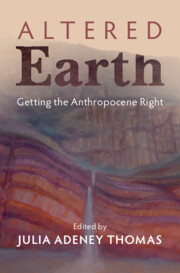Book contents
Part Two - One Anthropocene; Many Stories
Published online by Cambridge University Press: 24 March 2022
Summary

- Type
- Chapter
- Information
- Altered EarthGetting the Anthropocene Right, pp. 81 - 220Publisher: Cambridge University PressPrint publication year: 2022



